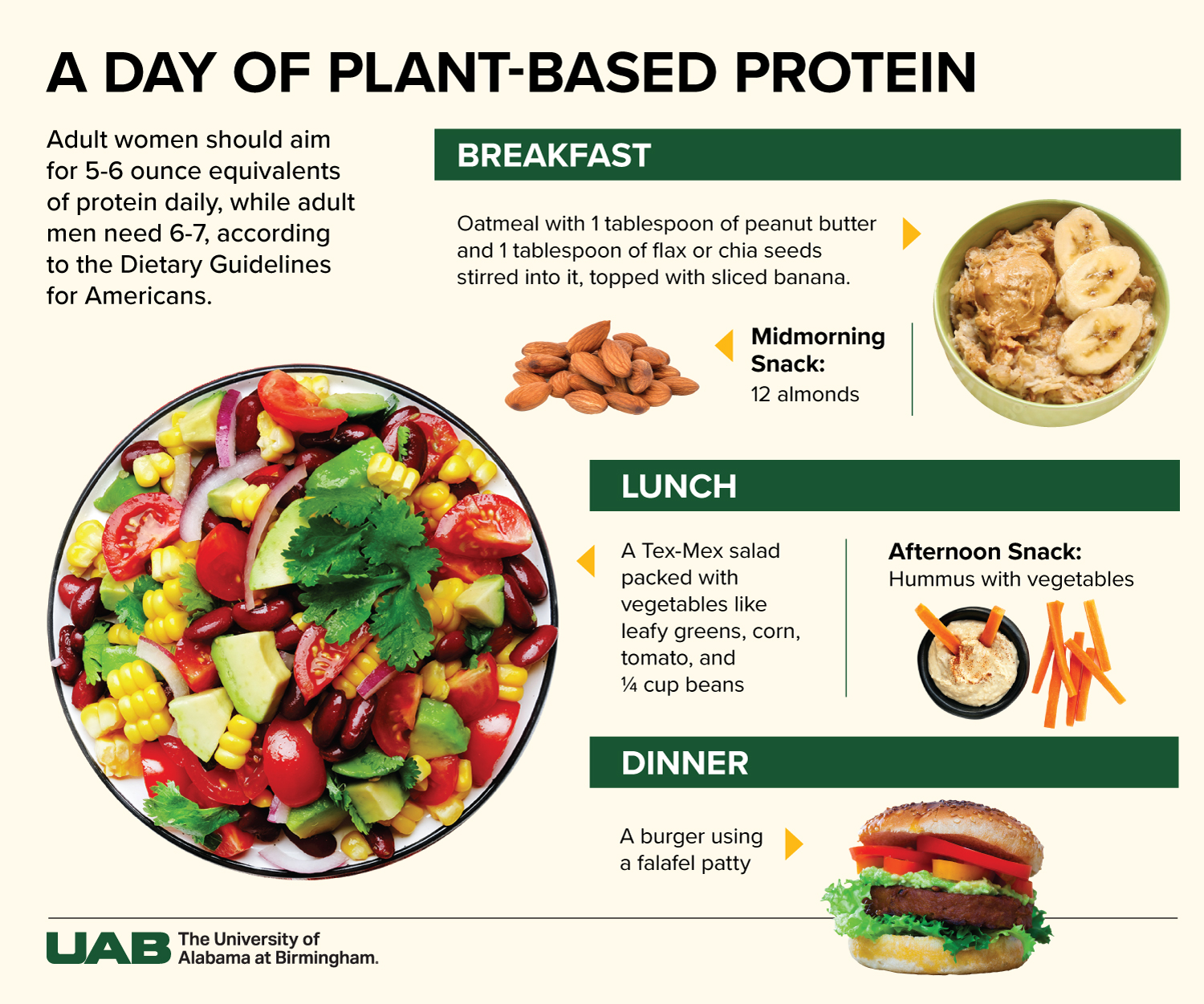 Most Americans meet their daily protein needs, but the real challenge lies in diversifying their sources, according to one University of Alabama at Birmingham nutrition researcher.
Most Americans meet their daily protein needs, but the real challenge lies in diversifying their sources, according to one University of Alabama at Birmingham nutrition researcher.
Tara Kelly, Ph.D., RDN, an instructor in the UAB Department of Nutrition Sciences, says incorporating more plant-based proteins — such as beans, legumes, nuts and seeds — can help boost variety and improve overall nutrition.
“In addition to protein, many of these plant foods are good sources of dietary fiber, a nutrient most adults do not get enough of,” Kelly said. “These plant-based foods are also rich in numerous vitamins and minerals, which is why they are considered part of both the ‘protein’ and ‘vegetable’ food groups.”
Budget-friendly and nutritious
If budget consciousness is a New Year goal, aiming to eat a few meat-free meals throughout the week could help save money, as these plant sources of protein may cost less than many meats.
“Many people find that adopting a ‘Meatless Monday’ is a good way to start eating more plant-based meals,” Kelly said. “The concept is simple — don’t eat meat on this one day of the week.”
Incorporating variety
If committing to an entirely plant-based meal feels daunting, Kelly says, there are other ways to add variety to your protein sources. For instance, if beef or poultry are go-to options, consider including seafood in one’s diet at least twice a week, as recommended by the 2020-2025 Dietary Guidelines for Americans. However, nearly 90 percent of Americans fall short of this seafood recommendation, highlighting a common gap in dietary variety.
Alternative options
Not a big fan of seafood? Eggs are another versatile, meat-free option to add to one’s diet.
“In my household, we enjoy ‘breakfast for dinner’ nights — an easy, budget-friendly way to mix things up, especially on busy evenings,” Kelly said. “You can also prepare dishes like a vegetable quiche ahead of time for a convenient, protein-packed meal.”
By diversifying protein sources and including more plant-based options, Kelly says, nutrition can be boosted, health is supported, and even money can be saved.
Practical portions
Kelly says you can use your hand as an estimate of portion sizes for different sources of protein.
For example:
• A closed fist is a good estimate for a portion of legumes (like beans).
• The amount that fits into the palm of your cupped hand is an appropriate serving size for nuts or seeds.
• The size of your thumb is an estimate of 1 tablespoon (1 ounce equivalent) for nut butters.
The size of the palm of one’s hand is a good estimate for one portion of meats, poultry or fish (about 3 ounces), including the cut being the same thickness as the palm of the hand.
Common misconceptions
Kelly says some people believe they need large portions of meat to meet their protein requirements. However, most American adults are getting enough protein; it is the variety in their protein intake that is lacking. The Dietary Guidelines for Americans suggest that adult women need about 5- to 6-ounce equivalents of protein a day, while adult men need about 6 to 7 ounces for ages 30 to 59 years.
“Adults may need more than this general recommendation based on how physically active they are or other factors,” Kelly said. “If you have a medical condition, please consult with your provider for your intake needs.”
Overcoming potential challenges
For picky eaters, Kelly recommends starting with the foods that one enjoys eating and then try to incorporate more of those before branching out. For instance, those who enjoy peanut butter or nuts should try incorporating peanut butter on slices of banana or a handful of nuts as a snack during the day.
“Stick with this new habit consistently for about a week before trying to incorporate these foods at more meals or trying other plant protein options,” Kelly said. “You don’t have to be a great cook to put together a well-balanced meal. Focus on meeting major food groups more than anything else.”
She says frozen and canned food items are great options when fresh is not feasible. For seafood specifically, a tuna or salmon salad can be made using the canned variety of both fish. Individually packaged, frozen fish can be found at most grocery stores, making them great to keep on hand.
“Keeping frozen seafood like salmon, cod and shrimp in your freezer ensures you have the option of seafood readily available without worrying about it going bad before you have time to cook it,” Kelly said.